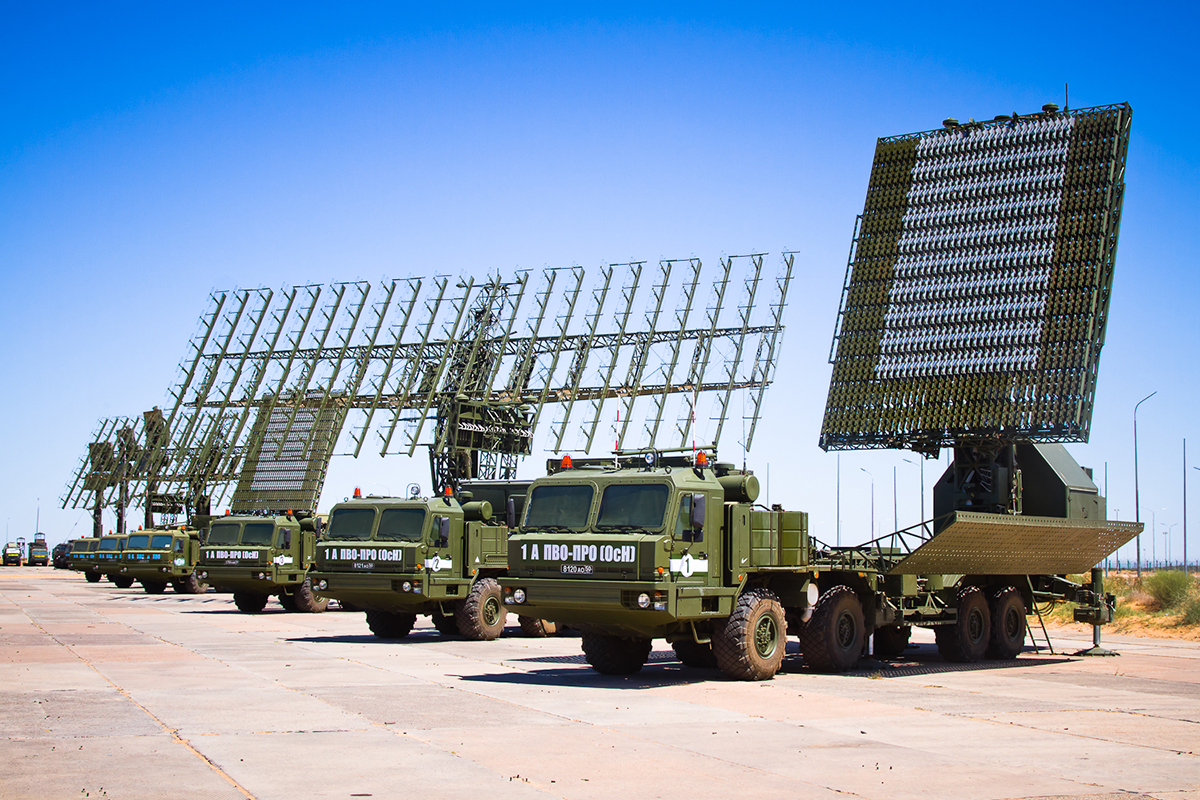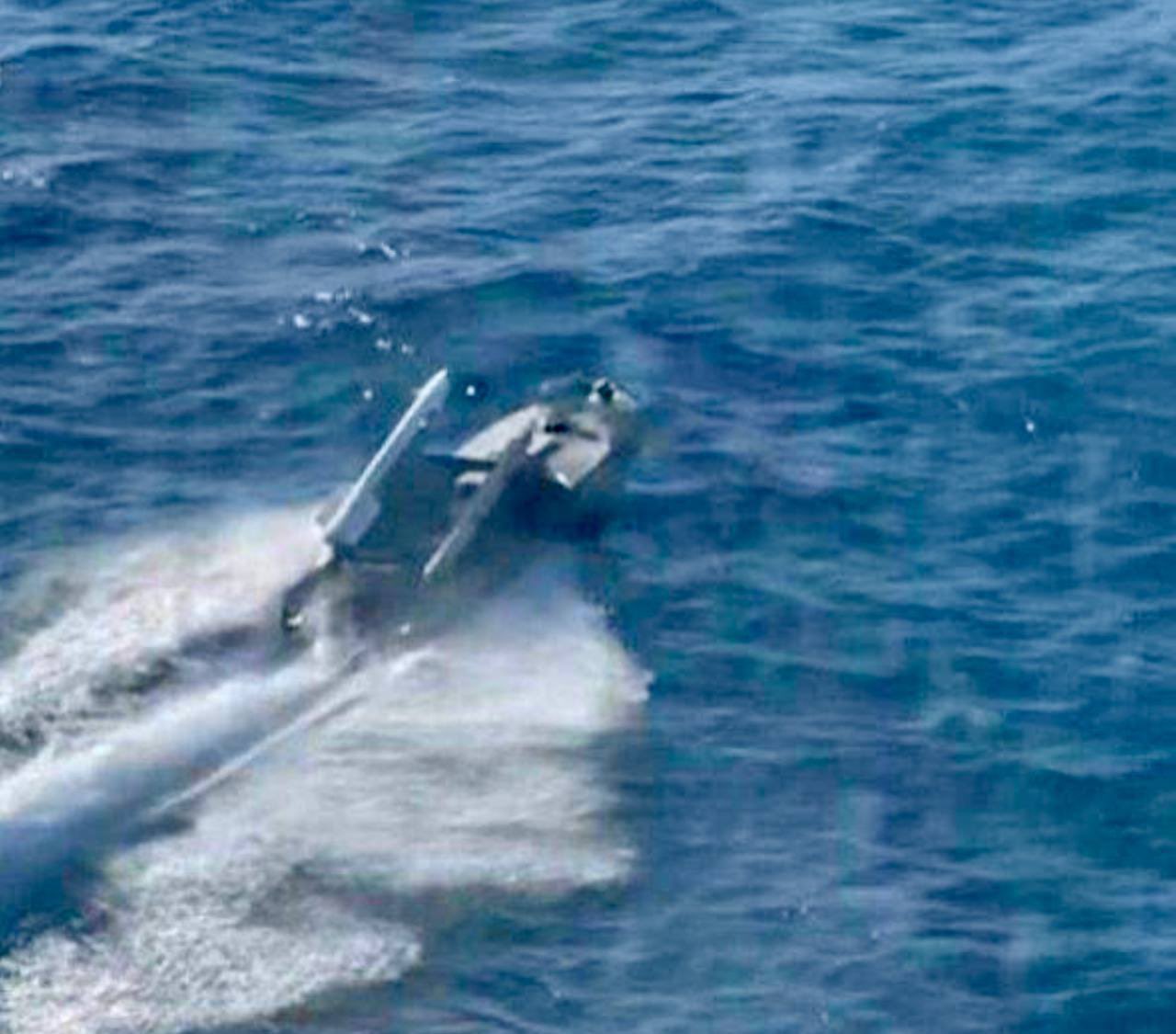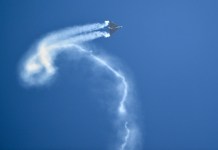Ukraine’s Unmanned Surface Vessels (USVs), or drone boats, recently released bomber drones to attack a sophisticated Russian radar system deployed in the Crimean Peninsula, marking a historic first.
“On the night of July 1 to 2, 2025, Ukraine’s Southern Defense Forces carried out a brilliant, high-precision special operation,” the Ukrainian Ministry of Defense (MoD) announced in a post on X. The Ministry has also published over a minute-long video of the bomber drones launching from the bow of the USV and dumping multiple explosives on the Russian radars.
The strikes were carried out on components of the Russian “Nebo-M” radar system, which appears to be part of Ukraine’s offensive strategy aimed at destroying Russian air defense systems and sophisticated radars to create “air corridors” for long-range cruise missiles, such as Storm Shadow and SCALP-EG.
Notably, the drone bomber attack comes amid reports that Russia has been relentlessly attacking cargo ships and port infrastructure across the Black Sea coast in a bid to destroy Ukraine’s grain exports.
Ukraine introduced sea drones early in the ongoing conflict to counter the dominance of the Russian Black Sea Fleet (BSF). It has since continued to improvise and innovate, causing significant damage and catching the Russians off guard.
For instance, it released First Person View (FPV) drones from these drone boats in March 2025 to hit Russian air defense systems and surface-to-air missiles.
For the first time we see the launch of the Ukrainian heavy drones from the unmanned sea platform:
– We can see that each sea platform caries at least two heavy drones (hard to see the second one because of the subtitles);
– Each heavy drone is armed with 3 bombs. https://t.co/26jQqQggoT pic.twitter.com/WwNRS6OQrM— Special Kherson Cat 🐈🇺🇦 (@bayraktar_1love) July 3, 2025
This heralded a new era of drone warfare where sea drones would act as motherships for aerial drones, a template that is likely to be used by militaries globally.
Replacing FPVs with bomber drones significantly expands their destructive capability, as the latter can carry more explosives than the FPVs, allowing them to hit more targets. Additionally, bomber drones can travel longer distances without losing contact, as they can hit their targets without having to plunge to the ground.
Nebo-M hit by drone-boat launched heavy bomber
45.347288562, 32.4986512885
Mayak, Crimea@GeoConfirmed https://t.co/ny03ZNch4x pic.twitter.com/0oIpgfePlv— imi (m) (@moklasen) July 3, 2025
The operation was apparently a resounding success, as demonstrated by the satellite images published in the aftermath of the attack.
‘Ukraine FrontLine,’ a Ukrainian independent citizen media account, wrote on X: “In general, the Black Sea has been cleared of Russians; now it is time to clear the coast. By the way, the footage shows the destruction of three different types of Nebo-M radars, each of which costs about $100 million.”
The Nebo-M is a venerated Russian mobile, multi-band radar system designed to detect and track a wide range of aerial targets, including stealth aircraft, ballistic missiles, cruise missiles, and unmanned aerial vehicles (UAVs).
The Nebo-M integrates three distinct radar modules operating in different frequency bands to enhance detection capabilities and counter stealth technologies. Thus, making it an extremely high-value target.

The radar system, which provides early warning and target acquisition for missile defense systems, is a crucial component of Russia’s air defense network. Russia’s defense posture is enhanced by its reported ability to detect stealth and hypersonic threats. However, the system’s active radar emissions make it vulnerable to missiles homing in on radar signals.
Ukraine has repeatedly aimed for this sophisticated radar.
For instance, in May 2024, it launched an ATACMS (Army Tactical Missile System) long-range missile on a Nebo-M deployed in Luhansk. Later, in July 2024, it used naval drones and Lazar UAVs to strike a Nebo-M deployed in Crimea. This was followed by another ATACMS strike on the radar system in October 2024.
Moscow launched the biggest-ever drone and missile attack on Ukraine overnight into July 4, just hours after US President Donald Trump said he had made “no progress” towards a ceasefire deal in a phone call with Vladimir Putin. Videos of buildings on fire were published on social media, showing horrific impact.
Against that backdrop, more such attacks using the formidable fleet of drone boats can be expected on Russian targets in the coming days.
Ukrainian USVs Are Combat Heroes
Despite lacking warships and destroyers, the Ukrainians have managed to keep the Russian Black Sea Fleet at bay. Russia has withdrawn most of its warships from the region, fearing a Ukrainian attack.
Ukraine’s two most popular and successful USVs—the Magura V5 and Sea Baby—are known to have evolved from simple and basic explosive-laden boats to sophisticated platforms capable of long-range, multi-role operations. It has also deployed the Magura V7.
These USVs, which cost a fraction of the price of traditional warships — approximately $250,000 — enable Ukraine to continue mounting highly effective strikes without the risks and expense associated with manned vessels.
It was in October 2022 when an unprecedented operation saw small uncrewed surface vessels (USVs) break through Russian defenses and reach the depths of Sevastopol harbor, targeting the flagship of the Russian Navy.
This high-profile operation marked a significant shift in naval warfare, underscoring the potential of uncrewed vessels in modern conflicts.
The intensity of USV operations increased significantly in 2023, reaching a peak during the summer when the Ropucha-class landing ship Olenegorsky Gornyak was struck near Novorossiysk.

By May 2024, Ukraine had equipped some USVs with R-60 and R-73 air-to-air missiles. These infrared-guided missiles didn’t require precise aiming before launch, making them well-suited for sea-based platforms.
Moreover, integrating such missiles was no trivial feat and required an improvised launcher on a gyro-stabilized mount to offset wave motion, coordinated with the USV’s autopilot, cruise control, and operator datalink.
The Magura V5 naval strike drone accomplished a historic feat on December 31, 2024, by downing a Russian Mi-8 helicopter. At the time, the Ukrainian Military Intelligence (HUR) stated that during a battle in the Black Sea off the western coast of Crimea, the special unit Group 13 fired an R-73 “SeeDragon” missile from the Magura-V5 drone.
Additionally, Ukrainian intelligence also secured a radio intercept in which a pilot of a Russian Mi-8 helicopter, hit by a missile fired from a Magura V5 USV, described the type of attack and its effects on the aircraft.
While the Magura V5 can travel 800-1,000 kilometers and carry payloads of approximately 200– 320 kilograms, the Sea Baby has been upgraded to carry 860 kilograms over comparable distances. These drone boats have been able to hit targets such as the Kerch Bridge as well as Russian BSF vessels due to their newly extended ranges.
Ukrainian drone boats used Western-supplied AIM-9 Sidewinder missiles to shoot down a pair of Russian Su-30SM fighters over the Black Sea on Friday, per Lt. Gen. Kyrylo Budanov.
These would be the first Sidewinder kills on Russian fast jets during the Ukraine war. pic.twitter.com/8SMgqq020T
— OSINTtechnical (@Osinttechnical) May 4, 2025
Additionally, they have been armed with advanced and lethal missiles acquired from the United States. On May 2, 2025, a Ukrainian Magura V7 armed with a pair of AIM-9X Sidewinder infrared-guided air-to-air missiles shot down a Russian Su-30SM naval fighter jet approximately 50 km west of Novorossiysk— a first in aviation history.
At the time, military expert Vijainder K. Thakur said: “Their ability to operate covertly close to Russian territory suggests real-time situational awareness, possibly enabled by Western aerial and satellite ISR platforms. Notably, the ambush was likely staged around 50 km from the coast, beyond the reach of Russia’s routine coastal patrols.”
The USVs launching bomber drones take this capability much further. Russia will have to watch out.
- Contact the author at sakshi.tiwari9555(at)gmail.com
- Follow EurAsian Times on Google News




